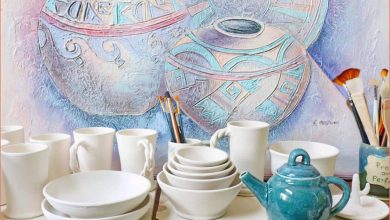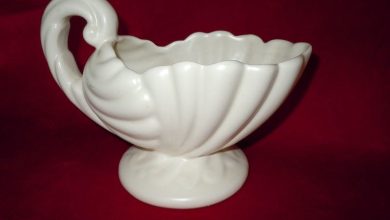What Can You Do With a Kiln
With a kiln, you can fire pottery and bricks at high temperatures beyond regular household ovens.
Kilns can be powered by electricity, wood, or coal.
Additionally, kilns can be used to dry lumber, tobacco leaves, or hops.
They have been used for thousands of years and are commonly used for pottery making and brick manufacturing.
Kiln-dried wood, produced by kilns, burns at high temperatures, produces natural flames, and has lower smoke emissions, making it better for the environment.
Did You Know?
1. Did you know that the kiln was originally used for creating earthenware pottery but later evolved to serve other purposes, such as firing bricks, glass, and even metals?
2. The process of kiln drying wood not only prevents warping and cracking but also increases its strength and durability.
3. A technique called raku, developed in 16th-century Japan, involves using a kiln to quickly fire pottery and then rapidly cooling it. This creates unique and often unpredictable glaze patterns.
4. The Pit Fire technique, an ancient method of firing pottery, involves burying ceramic pieces in a pit filled with combustible materials such as sawdust, seaweed, or leaves. The kiln-like environment created by the burning materials gives the pottery distinct and rustic characteristics.
5. Pyrometric cones, small refractory shapes made from ceramic materials, are commonly used in kilns to measure the temperature, determine when a specific heat treatment is complete, or to gauge the firing process. These cones are specifically designed to bend or melt at certain temperatures, offering a visual indication to the kiln operator.
Kilns: Beyond Pottery And Bricks
When we think of kilns, the first images that come to mind are often those of beautifully crafted pottery and sturdy bricks. However, the versatility of kilns extends far beyond these two uses. Kilns are essential tools that can reach high temperatures beyond what regular household ovens are capable of, making them invaluable for various applications.
Beyond pottery and bricks, kilns can also be used to dry a wide range of materials, such as lumber, tobacco leaves, and hops. The controlled heat and airflow within a kiln make it an ideal environment for drying these products efficiently and effectively. Kilns ensure that the moisture content is reduced, resulting in perfectly seasoned wood, dried tobacco leaves, and well-preserved hops.
Furthermore, kilns are similar to ovens in the sense that they are used to heat objects for specific processes. This makes kilns indispensable in not only pottery making and brick manufacturing but also in other creative disciplines such as glassblowing and metalwork. The ability to precisely control the temperature and create consistent heat in a kiln opens up a world of possibilities for artists and artisans to explore and create unimaginable masterpieces.
- Kilns can reach high temperatures beyond household ovens
- Kilns are essential tools for various applications
- Kilns can be used to dry materials like lumber, tobacco leaves, and hops
- Kilns ensure efficient and effective drying
- Kilns can be used in pottery making, brick manufacturing, glassblowing, and metalwork
- Kilns offer precise temperature control and consistent heat
- Kilns allow artists and artisans to create masterpieces
Powering Kilns: From Electricity To Coal
Kilns can be powered by different energy sources, depending on the specific needs and circumstances. Electric kilns are a popular choice, especially in modern settings, as they offer a convenient and clean option. These kilns are powered by electricity and have built-in digital controls to regulate temperature and firing cycles accurately.
On the other hand, traditional kilns can be powered by wood or coal. These methods are often preferred by those who value the traditional craftsman experience or want to achieve specific effects in their work. Wood-fired kilns provide an authentic and unique aesthetic to pottery and ceramics, with natural ash glazing and subtle variations in color and texture. Coal-fired kilns, although less commonly used today due to environmental concerns, can reach extremely high temperatures ideal for specialized applications.
Kilns For Drying: Lumber, Tobacco, And Hops
Apart from their association with artistic endeavors, kilns find their usefulness in industries where drying is crucial. Kiln drying is a process employed to remove moisture content from various materials, enhancing their quality and usability.
-
Lumber, for example, needs to be dried before it can be used in construction or woodworking projects. By carefully controlling the temperature and humidity levels within the kiln, the drying process can be accelerated without compromising the structural integrity of the wood.
-
Similarly, tobacco leaves require drying to prepare them for the production of cigars and other tobacco products. The removal of moisture ensures that the flavor profile and burning characteristics of the tobacco are well-preserved. Kilns offer consistent and reliable drying conditions, guaranteeing a high-quality end product.
-
Hops, which are a key ingredient in brewing beer, also benefit from kiln drying. Kilns help to remove excess moisture from hops, allowing them to be stored for extended periods without deterioration. This ensures that brewers have a steady supply of top-quality hops, resulting in consistent flavors and aromas in their craft beer creations.
The Origins Of Kilns: From Old English To Latin
The word “kiln” originates from the Old English word “cyln” and can be traced back to the Latin language. In Old English, “cyln” referred to an oven or furnace used for baking or firing pottery. The Latin root of the word, “culina,” signifies a kitchen or a place where cooking is done. This historical connection highlights the significant role kilns have played throughout human civilization in both practical and creative realms.
Kilns have a fascinating history dating back thousands of years. Archaeological evidence suggests that early ceramics were fired in kilns as early as the Neolithic period, around 6000 BCE. The discovery of kiln-fired pottery revolutionized human culture by providing new vessels for cooking, storing food, and facilitating trade. As time progressed, kilns evolved and improved, enabling the production of increasingly intricate forms and decorative techniques.
Throughout history, the development and refinement of kiln technology have been closely intertwined with cultural, social, and economic advancements. Kilns have adapted to meet the changing needs of societies from ancient civilizations such as Mesopotamia, Egypt, and China, to the European Renaissance and the Industrial Revolution.
- Kilns have played a central role in human civilization
- Early ceramics were fired in kilns as early as 6000 BCE
- Kiln-fired pottery had a profound impact on culture and trade
- Kiln technology has continuously advanced throughout history
“The development and refinement of kiln technology have been closely tied to cultural, social, and economic advancements.”
Kilns: Ancient Tools For Modern Applications
While kilns have a rich heritage rooted in ancient civilizations, they remain vital tools in modern applications. Whether it is in ceramic art studios, industrial brick production, or even the home woodworking shop, kilns continue to play a critical role.
Contemporary pottery studios utilize state-of-the-art electric kilns that offer precise temperature control, allowing artists to achieve consistent firing results. These kilns enable ceramicists to push the boundaries of their creativity, experimenting with new techniques and glazes to create unparalleled works of art.
In the construction industry, kilns are essential for manufacturing bricks. The firing process in kilns strengthens and solidifies the raw clay, transforming it into a durable building material. Brick kilns, often operating on a grand scale, provide the backbone for infrastructure development worldwide.
Moreover, kilns are finding new applications in sustainable practices. Kiln-dried wood, for instance, provides a more efficient and eco-friendly fuel source. Homefire, a leading provider of kiln-dried firewood, sources their wood from responsibly managed forests in Latvia. Kiln-dried wood burns at higher temperatures and produces natural flames, resulting in lower smoke emissions. By using kiln-dried wood, individuals can reduce their environmental impact and enjoy a brighter, longer-lasting fire experience.
Kilns offer a myriad of possibilities beyond their association with pottery and bricks. From drying lumber to preserving tobacco leaves, kilns serve as invaluable tools across various industries.
- Drying lumber
- Preserving tobacco leaves
With their origins rooted in ancient history, kilns have adapted over time and continue to be used in today’s modern world. As we appreciate the artistry of ceramic masterpieces and the durability of bricks, we must also recognize the significant role kilns play in shaping our cultural heritage and supporting our progress.
Check this out:
Frequently Asked Questions
Why do we use a kiln?
The use of a kiln is essential due to its ability to generate high temperatures required to accomplish specific processes. Whether it is for drying, hardening, or causing chemical transformations, a kiln provides the necessary heat. As a comparable appliance to an oven, a kiln harnesses its heat to fulfill these purposes efficiently and effectively. By utilizing a kiln, we can achieve the desired results with precision and control, making it an invaluable tool in various industries and artistic practices.
What is a kiln used for in art?
A kiln in the realm of art serves as a vital tool for transforming the potential of clay into tangible creations. By subjecting pottery or bricks to intense heat, a kiln enables the firing process, where the pieces undergo chemical changes, solidifying and becoming durable. This crucial step allows an artist to bring their envisioned clay bowls to life, as the kiln’s controlled environment facilitates the hardening and strengthening of the art piece. With a ceramic artist utilizing a kiln once a week, this versatile apparatus acts as their creative accomplice, ensuring their artistic visions materialize into beautifully crafted pottery.
Is a kiln just an oven?
While a kiln may resemble an oven in terms of being an enclosed heating chamber, it serves a distinct purpose from your typical household oven. Unlike an oven, a kiln is specifically designed to reach significantly higher temperatures without melting or altering the shape of the objects inside. It is primarily used for processes like drying ceramics, firing clay, or applying glaze. Its temperature control and ability to maintain high heat make it a specialized tool for crafting and enhancing ceramic creations. In contrast, an oven is more commonly used for cooking food, providing heat at lower temperatures and primarily focusing on the culinary domain. Hence, while both involve heating enclosed spaces, a kiln is far from being just an oven.
Can I use a kiln at home?
Using a kiln at home can be done safely if certain precautions are followed. The high temperatures involved in kiln firing release potentially toxic compounds into the air, so it is crucial to prioritize safety. To prevent any harm, it is important to adhere to safety procedures and tips designed to protect against the risks associated with kiln usage. By doing so, you can safely enjoy the benefits of using a kiln in the comfort of your own home.


